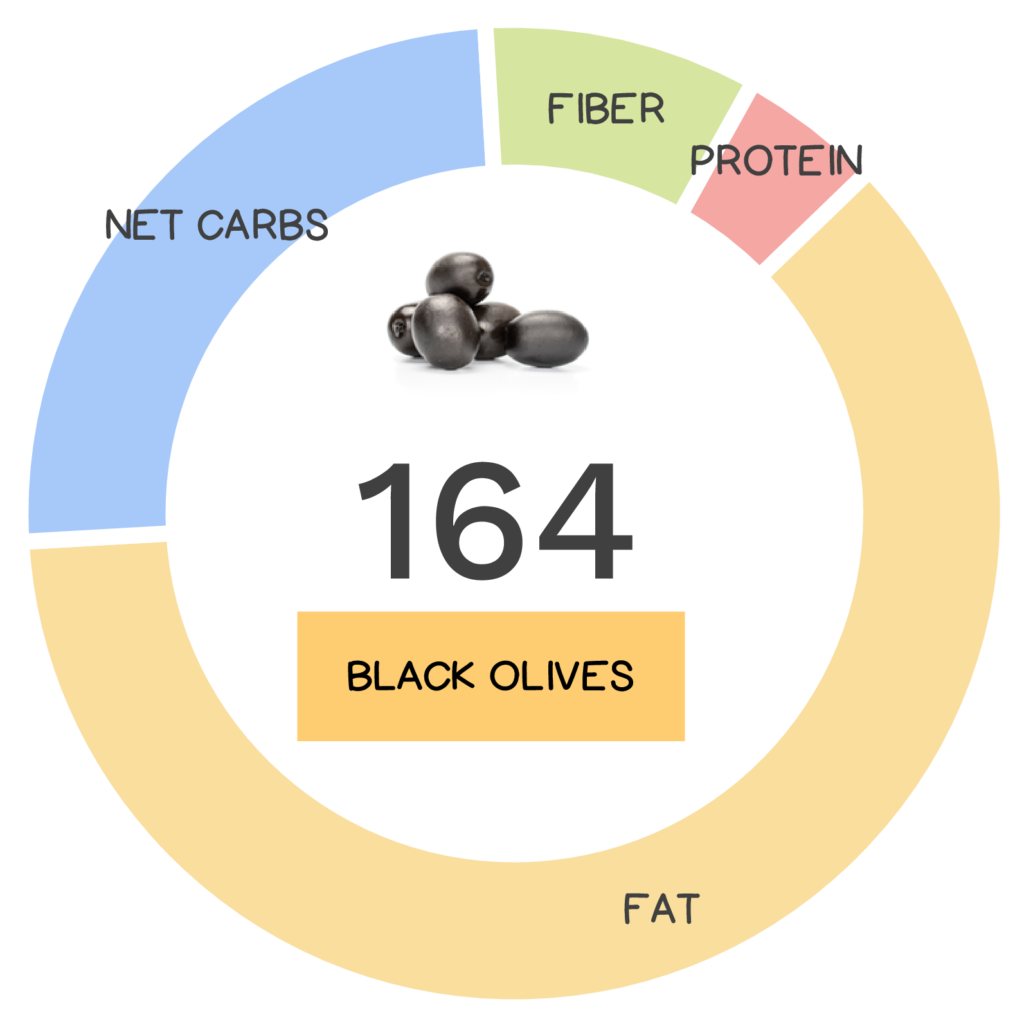
A staple of the Mediterranean cuisine, olives are one of the most extensively cultivated crops in the world! In fact, olive trees occupy more than twice the amount of land devoted to apples, bananas, or mangoes – only coconut trees and oil palms inhabit more space. As of 2005, there was a whopping 865 million olive trees world-wide! While approximately 90% of all harvested olives are turned into oil (almost “olive” them!), 10% are reserved for consumption (known as table olives). If you haven’t had the pleasure of eating them this way, do yourself a favor, grab a jar and start snacking! Not only are they delicious, but they offer spectacular health benefits too.
Olives are one of the most extensively cultivated crops in the world – as of 2005, there were 865 million olive trees world-wide!
The olive tree, Olea europaea, is native to the Mediterranean Basin, with fossil evidence indicating that it originated 20 to 40 million years ago! It was first cultivated roughly 7,000 years ago and as far back as 3,000 BC was grown commercially in Crete. In Ancient Greece, olives along with grain and grapes formed the triad of staple Greek crops, which contributed to the emergence of more complex societies. Even today, trees that are centuries old still exist – one of the oldest known trees still alive can be found in Portugal, with an estimated age of 3,350 years! Historically, olives feature prominently in various religions. Culturally, olives symbolize wisdom, fertility, power and purity, while the olive branch is often used as a symbol of abundance, glory and most notably peace, hence the common expression “to offer an olive branch.” (The eagle in the Great Seal of the United States clutches an olive branch in one of its talons, indicating the power of peace). Throughout history olive branches have been offered to powerful figures and were also used to crown the winners of competitions and wars.
One of the oldest known olive trees still alive can be found in Portugal, with an estimated age of 3,350 years!
The olive tree is cultivated both for its unique fruit and the oil that the fruit bears. There are hundreds of cultivars, some are primarily grown for oil, others for eating and some for both. The fruit varies in color, size, shape and oil quantity and quality. Table olives are separated into three categories: green olives, semi-ripe/turning-color olives, and black/ripe olives. Raw olives are naturally very bitter (due to the presence of phenolic compounds), which is why they are typically cured using a variety of methods before they are consumed. Today, olives are cultivated all over the world but the 10 largest producing countries are all located in the Mediterranean region and produce 95% of all the world’s olives!
Green olives are harvested unripe, while black olives are harvested when fully ripe.
Black olives are harvested when fully ripe, range in color from purple to brown or black, are cured without a fermentation step, generally contain more oil and less salt, and taste less bitter than their green counterparts. Common varieties include Gaeta, Kalamata, Ligura, and Lugano.
Nutrivore Score for Black Olives – 164
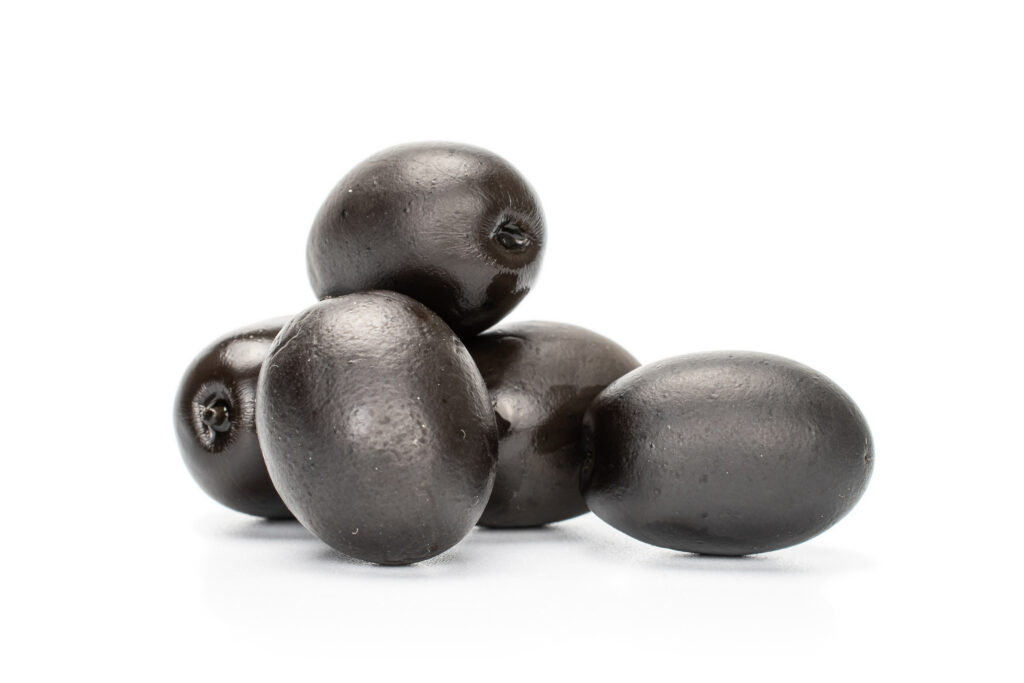
Black olives have a Nutrivore Score of 164, making them a medium nutrient-dense food! Plus, they are a low-carb food; black olives have 6.0 grams of net carbs per cup!
Per serving, black olives are a good source (10-20% daily value) of iron, monounsaturated fatty acids (MUFA), and polyphenols.
Ditch Diets. Embrace Nutrients. Start with this FREE Guide.
Sign up for the free Nutrivore Newsletter, your weekly, science-backed guide to improving health through nutrient-rich foods — without dieting harder —and get the Beginner’s Guide to Nutrivore delivered straight to your inbox!

Black Olive Nutrition Facts
One serving of black olives is standardized to 1/4 cup or about 34 grams (1.2 ounces). A typical large black olive weighs 4.4 grams which means: one serving of black olives is roughly equivalent to 8 large olives (or 11 small olives).
Black Olive Nutrition Facts Per Serving
| Black olives, ripe, canned | Nutrivore Score: 164 | Nutrient Density: Medium |
|---|---|---|
| Serving Size: 1/4 cup (34 grams) | Protein: 0.3 grams | Net Carbohydrates: 1.5 grams |
| Calories: 39 | Total Fat: 3.7 grams | Dietary Fiber: 0.5 grams |
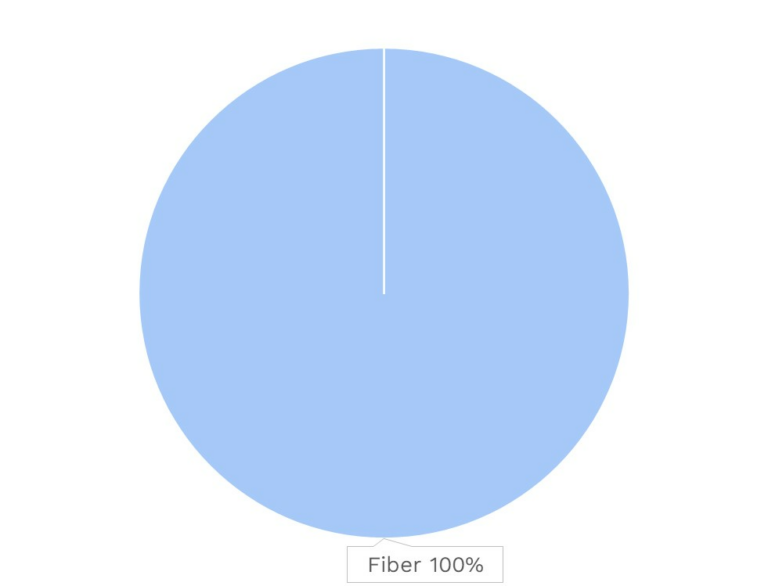
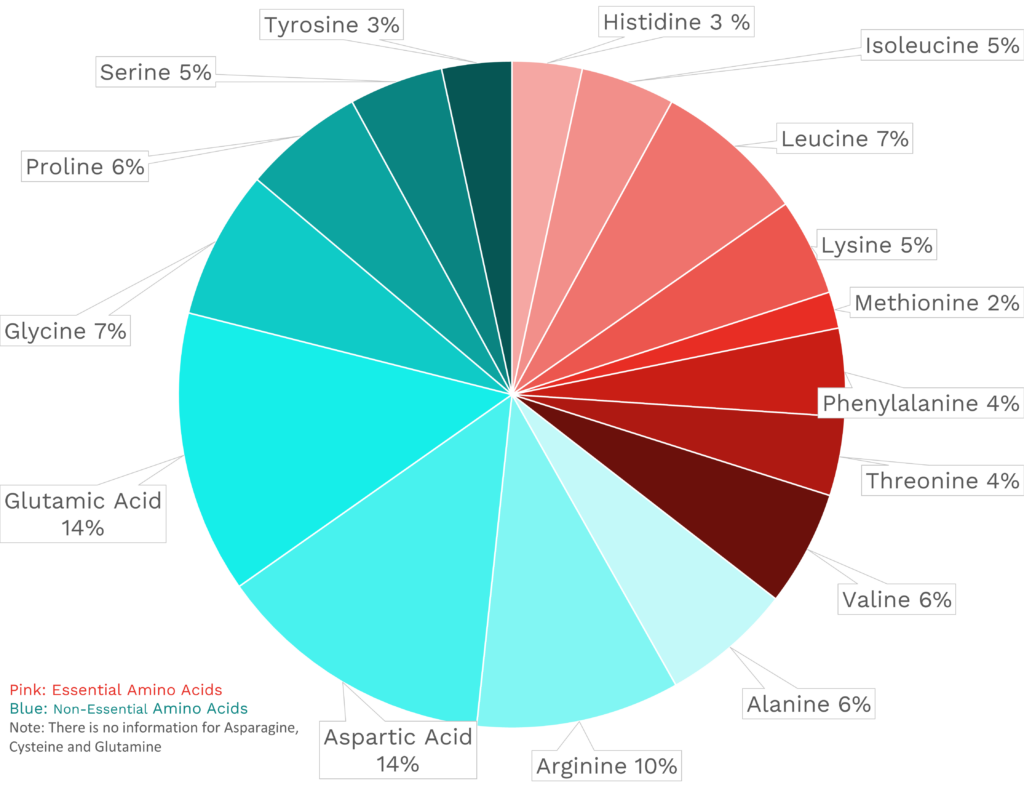
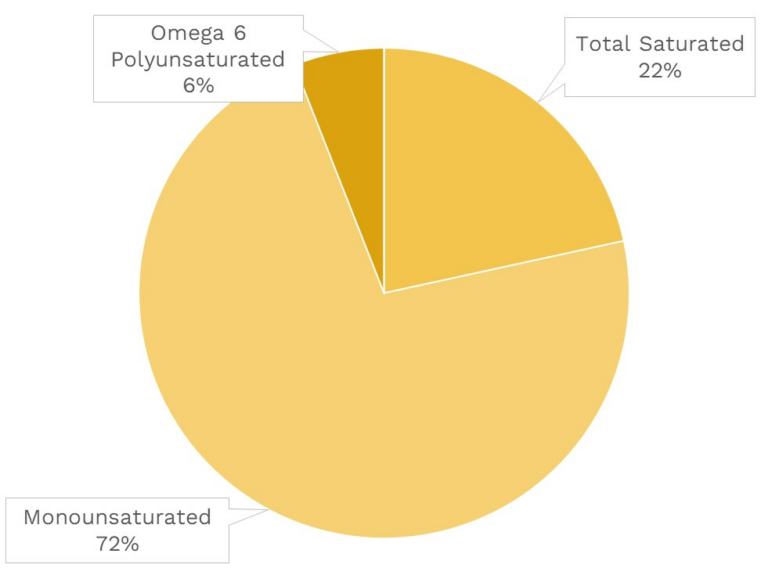
| VITAMINS | ||
|---|---|---|
| Vitamin A | 5.8 μg RAE | 1% DV |
| Vitamin B1 (Thiamin) | 1.0 μg | 0% DV |
| Vitamin B2 (Riboflavin) | 0.0 μg | 0% DV |
| Vitamin B3 (Niacin) | 0.0 mg | 0% DV |
| Vitamin B5 (Pantothenic Acid) | 0.0 mg | 0% DV |
| Vitamin B6 (Pyridoxine) | 3.1 μg | 0% DV |
| Vitamin B7 (Biotin) | 0.0 μg | 0% DV |
| Vitamin B9 (Folate) | 0.0 μg | 0% DV |
| Vitamin B12 (Cobalamin) | 0.0 μg | 0% DV |
| Vitamin C | 0.3 mg | 0% DV |
| Vitamin D (D2 + D3) | 0.0 μg | 0% DV |
| Vitamin E | 0.6 mg | 4% DV |
| Vitamin K | 0.5 μg | 0% DV |
| Choline | 3.5 mg | 1% DV |
| Myo-Inositol | 3.4 mg | ~ |
| CoQ10 | ~ | ~ |
| FUNCTIONAL FATS | ||
|---|---|---|
| MUFA | 2.6 g | 13% DV |
| ALA | 0.0 mg | 0% DV |
| EPA + DHA | 0.0 mg | 0% DV |
| CLA | ~ | ~ |
| Linoleic Acid | 0.2 g | 1% DV |
| MCT’s | 0.0 g | ~ |
| MINERALS | ||
|---|---|---|
| Calcium | 29.9 mg | 2% DV |
| Copper | 85.3 μg | 9% DV |
| Iodine | ~ | ~ |
| Iron | 2.1 mg | 12% DV |
| Magnesium | 1.4 mg | 0% DV |
| Manganese | 6.8 μg | 0% DV |
| Phosphorus | 1.0 mg | 0% DV |
| Potassium | 2.7 mg | 0% DV |
| Selenium | 0.3 μg | 1% DV |
| Sodium | 249.9 mg | 11% DV |
| Zinc | 0.1 mg | 1% DV |
| PHYTONUTRIENTS | ||
|---|---|---|
| Carotenoids | 240.7 μg | ~ |
| Polyphenols | 98.5 mg | ~ |
| Phytosterols | 11.6 mg | ~ |
| Glucosinolates | ~ | ~ |
| Thiosulfinates | ~ | ~ |
| Betalains | ~ | ~ |
| AMINO ACIDS & PEPTIDES | ||
|---|---|---|
| Taurine | ~ | ~ |
| Ergothioneine | ~ | ~ |
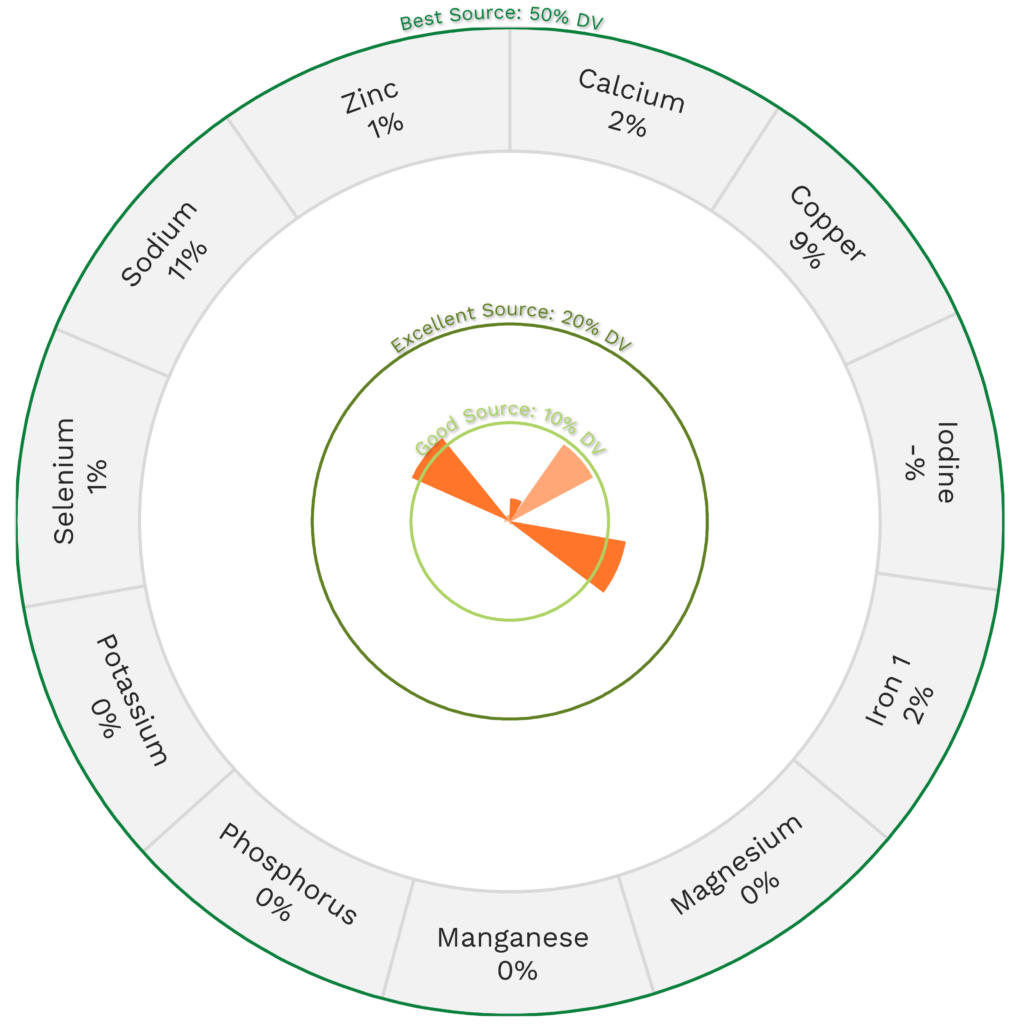

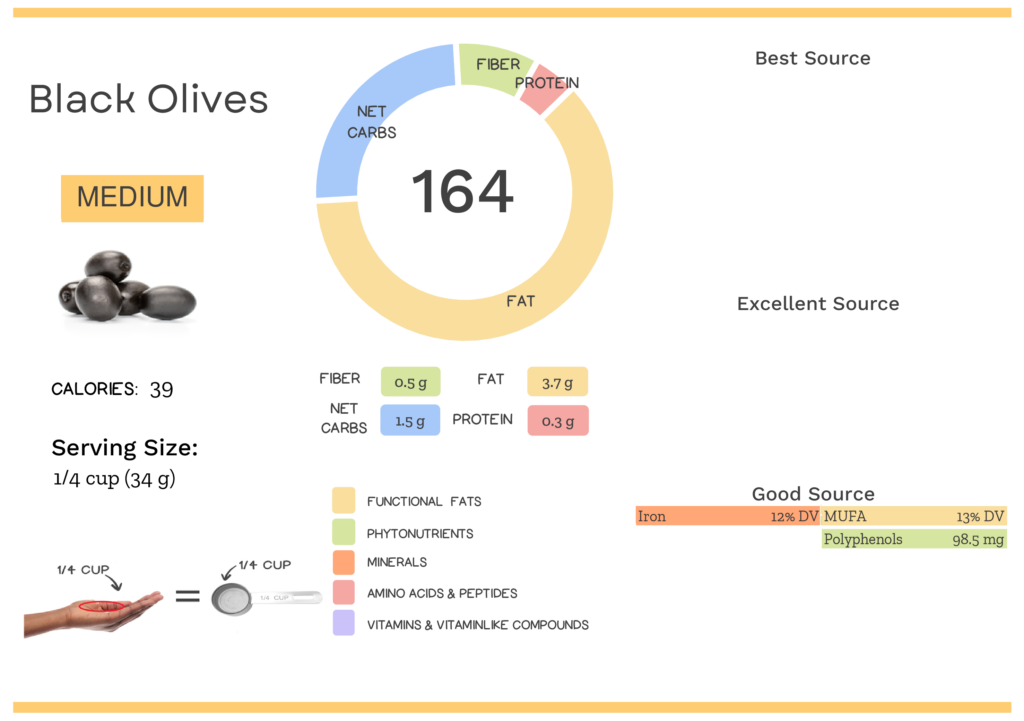
Olive Nutrition Varies With Processing
The Nutrivore Score of olives varies based on how they have been processed, with an astounding 90% of all harvested olives turned into oil and extra-virgin olive oil being the least processed form of oil.
| NUTRIVORE SCORE | |
|---|---|
| Black olives, ripe, canned (small – extra large) | 164 |
| Olive oil, extra-virgin | 139 |
| Olive oil, salad or cooking (virgin) | 106 |
Olive Nutrition Varies With Variety
The Nutrivore Score of olives varies depending on variety. There are hundreds of cultivars, some are primarily grown for oil, others for eating and some for both. Overall, there are 3 categories of table olives including green olives, semi-ripe/turning-color olives, and black/ripe olives. These olives differ in color, size, shape, oil quantity, nutrient profile, and most importantly, taste! If you’re not a fan of one particular olive, try another type, as green and black olives can taste quite differently – who knows, you just may end up eating “olive” them! (Hyuck)
| NUTRIVORE SCORE | |
|---|---|
| Black olives, ripe, canned (jumbo – super colossal) | 203 |
| Black olives, ripe, canned (small – extra large) | 164 |
| Green olives, pickled, canned or bottled | 160 |
Impressed by “olive” the nutrition in black olives? Maybe your friends will be too!
How Much Black Olives Should We Eat Per Day?
Love them or hate them, “olive” the research on this fruit (yes, olives are technically a fruit!) indicates that olives are a healthy addition to our diet and it would be “pit-iful” not to give them a try!
Fatty fruit, especially olives and avocados (and their oils) are very beneficial for our health, especially reducing risk of cancer and cardiovascular disease. For example, a 2022 study showed that just 7 grams of olive oil daily reduces all-cause mortality by 19% compared to rarely consuming olive oil. And another 2022 study showed that eating 2 or more servings of avocado per week reduces cardiovascular disease risk by 16%. A great goal is one ore more serving of fatty fruits or their oils per day (keeping total fat intake to 20% to 35% of total calories). A serving is 1/4 cup for whole olives or avocados, or 1 tablespoon for their oils.
Since olives go through a fermentation process in order to be edible (raw olives are too bitter to eat due to containing oleuropein, which requires fermentation and acidification to remove), they also offer some of the health benefits of fermented foods.
It’s always best to mix up the veggies you eat day to day (aiming for a wide variety of different vegetables and fruits throughout the week), and black olives definitely have a place at the table.
Easily track your servings of Nutrivore Foundational Foods!

The Nutrivore Weekly Serving Matrix
The Nutrivore Weekly Serving Matrix digital resource is an easy-to-use and flexible weekly checklist designed to help you maximize nutrient-density and meet serving suggestions of Nutrivore foundational foods, all without having to weigh or measure your foods!
Includes a 22-page instructional guide and downloadable interactive guides.
Buy now for instant digital access.
cITATIONS
Expand to see all scientific references for this article.
Clements RS Jr, Darnell B. Myo-inositol content of common foods: development of a high-myo-inositol diet. Am J Clin Nutr. 1980 Sep;33(9):1954-67. doi: 10.1093/ajcn/33.9.1954. PMID: 7416064.
Fineli Finnish Food Composition Database: Olive, Average, Without Stone, In Oil, Green/Black
Frida Food Database. National Food Institute, Technical University of Denmark: Olives, green, pickled, canned
Phenol-Explorer: Olive [Black], raw
USDA Food Central Database: Olives, ripe, canned (small-extra large)


